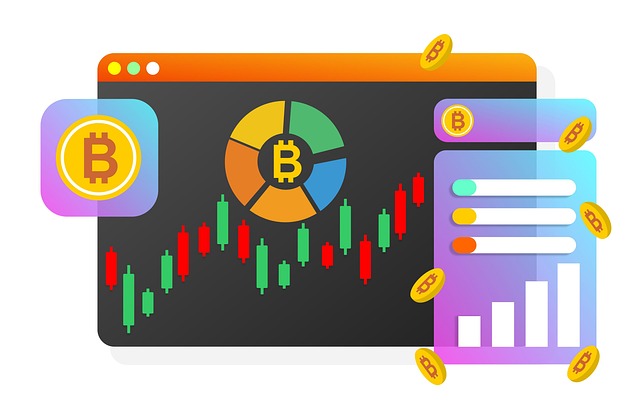Understanding the Cryptocurrency Process: A Comprehensive Guide
Author: Jameson Richman Expert
Published On: 2025-09-13
Prepared by Jameson Richman and our team of experts with over a decade of experience in cryptocurrency and digital asset analysis. Learn more about us.
The cryptocurrency journey is a multifaceted and rapidly evolving ecosystem that encompasses numerous stages—from creation and distribution to trading, security, and regulatory compliance. As digital assets become more mainstream, gaining a deep understanding of each facet of the cryptocurrency process is vital for investors, traders, blockchain developers, and enthusiasts. This guide aims to provide an in-depth exploration of how cryptocurrencies function, how to effectively participate, and the strategic considerations necessary for success in this innovative financial landscape.

Introduction to Cryptocurrency and Its Broader Significance
Cryptocurrency is a form of digital or virtual currency secured by cryptographic techniques, enabling secure, peer-to-peer transactions without intermediaries. Unlike traditional fiat currencies issued and regulated by governments, cryptocurrencies leverage decentralized networks based on blockchain technology, which ensures transparency, immutability, and censorship resistance. They have the potential to revolutionize global finance by reducing transaction costs, enhancing financial inclusion, and enabling programmable money through smart contracts. Furthermore, cryptocurrencies foster novel economic models such as decentralized autonomous organizations (DAOs), tokenized assets, and fractional ownership.
Understanding the fundamental principles—such as decentralization, cryptographic security, consensus mechanisms, and tokenomics—is crucial for comprehending the entire cryptocurrency process and its implications for the future of finance. These principles underpin the security, efficiency, and trustless nature of blockchain networks, allowing users to participate in a transparent and censorship-resistant financial system that challenges traditional banking and monetary paradigms.
How Cryptocurrency Works: Blockchain Technology and Mining
The backbone of cryptocurrency functionality is blockchain technology—a distributed ledger that records all transactions across a network of nodes (computers). Each block in the chain contains a batch of transaction data, timestamped and cryptographically linked to the previous block, ensuring data integrity and resistance to tampering. This structure creates a transparent, decentralized record accessible to all participants, fostering trust without a central authority. The blockchain’s transparency allows anyone to verify transactions, which is fundamental to maintaining decentralization and preventing fraud.
Mining is the process by which new blocks are added to the blockchain. Miners validate transactions through consensus algorithms such as proof-of-work (PoW) or proof-of-stake (PoS). In PoW, miners solve complex cryptographic puzzles—similar to solving a difficult mathematical riddle—which requires significant computational power and energy consumption. Successful miners are rewarded with newly minted coins and transaction fees, incentivizing continuous network security and decentralization. Conversely, PoS selects validators based on the amount of coins they stake—committing their holdings as collateral—which significantly reduces energy consumption and promotes scalability. These consensus mechanisms prevent double-spending, secure the network, and ensure all nodes agree on the transaction history.
From a technical perspective, blockchain nodes maintain the distributed ledger by verifying transactions, propagating blocks, and reaching consensus through protocols like Byzantine Fault Tolerance (BFT) or Delegated Proof-of-Stake (DPoS). These protocols enhance network resilience, reduce centralization risks, and facilitate faster transaction finality. As blockchain technology evolves, layer-2 solutions such as the Lightning Network for Bitcoin and Rollups for Ethereum are introduced to improve scalability, reduce fees, and enable high-volume microtransactions.
For a deeper technical understanding, explore this resource: Understanding Ethereum Sell-offs, Causes, Impacts, and Strategic Responses.
Getting Started: Selecting a Cryptocurrency Exchange
The initial step for engaging with cryptocurrencies is choosing a reputable exchange platform. These platforms facilitate the buying, selling, and trading of digital assets and vary significantly in security standards, user interface, trading features, and fee structures. Leading exchanges such as Binance, MEXC, Bitget, and Bybit offer comprehensive services, including spot trading, derivatives, margin trading, staking options, and API integrations for algorithmic trading.
When selecting an exchange, consider crucial factors like regulatory compliance—ensuring the platform adheres to local laws—liquidity levels, security protocols such as two-factor authentication (2FA), cold storage practices, and customer support responsiveness. Additionally, evaluate whether the exchange supports fiat-to-crypto transactions for ease of entry, offers a wide range of cryptocurrencies, and provides advanced trading tools if needed. Some platforms also integrate with third-party analysis tools to enhance decision-making.
To start, you can register on Binance here: Binance registration. Similarly, explore other platforms such as MEXC, Bitget, and Bybit.

Creating Wallets and Ensuring Asset Security
After establishing an account on an exchange, the next critical step is creating a secure digital wallet. Wallets are essential for storing private keys—cryptographic secrets that grant access to your funds—and managing your cryptocurrency holdings. Wallet types include:
- Hot Wallets: Connected to the internet, these wallets offer convenience for frequent transactions. Examples include software wallets (mobile or desktop apps) and web wallets. While they are easy to access and use, their online connectivity makes them more vulnerable to hacking, phishing attacks, malware, and other cyber threats. Therefore, hot wallets are generally recommended for smaller balances or active trading.
- Cold Wallets: Offline storage solutions, such as hardware wallets (e.g., Ledger, Trezor), paper wallets, or air-gapped devices, provide superior security for long-term holdings. They are immune to online threats but require careful handling to prevent physical loss, theft, or damage. Cold wallets are ideal for large or valuable assets, especially when not actively trading.
Protecting private keys is paramount; losing access to these keys means losing access to your assets permanently. Hardware wallets store private keys offline and often use secure elements to prevent extraction. Implementing multi-signature (multi-sig) setups—requiring multiple private keys to authorize transactions—adds an additional security layer, preventing unauthorized access even if one key is compromised. Multi-sig configurations are especially important for institutional and high-net-worth individuals.
Regular backups of seed phrases, secure passphrases, and employing hardware security modules (HSMs) are also recommended best practices to enhance asset security. Multi-factor authentication (MFA), biometric controls, and cold storage solutions are vital components of a comprehensive security strategy. Staying informed about emerging threats and security updates from wallet providers is essential to maintaining asset safety.
Funding Your Wallet and Initiating Transactions
Once your wallet is set up, the next step involves funding your account—either by depositing fiat currency (such as USD, EUR, or CNY) or transferring cryptocurrencies from other wallets. Funding is performed by generating a wallet address and executing a transfer from your bank account or other crypto wallets. Cryptocurrency transactions are known for their high speed, security, and transparency, but traders must be aware of network fees, congestion, and confirmation times.
Understanding transaction fee models—such as dynamic fees that fluctuate based on network congestion—can help optimize trading efficiency. For example, Bitcoin’s fee market varies significantly during peak times, affecting transaction speed and cost. Different blockchains have varying confirmation times: Bitcoin may take up to an hour or more, whereas some altcoins confirm within seconds. Smart transaction management includes scheduling transactions during periods of low network activity to minimize costs and delays.
Layer-2 scaling solutions like the Lightning Network for Bitcoin and Rollups for Ethereum are designed to reduce transaction fees and increase throughput, making microtransactions and high-frequency trading more feasible. Additionally, some exchanges and wallets support scheduled or fee-bid transactions, empowering users to choose optimal timings based on network conditions. Staying updated on blockchain upgrades and fee mechanics is crucial for cost-efficient trading.
For market insights and alternative coins, explore examples of altcoins in 2025.
Trading and Investment Strategies in the Cryptocurrency Ecosystem
The core of the crypto process involves active trading and investment, often driven by high volatility. Successful traders employ a combination of technical analysis—such as candlestick chart patterns, moving averages, Relative Strength Index (RSI), Bollinger Bands, and Moving Average Convergence Divergence (MACD)—to identify optimal entry and exit points. Fundamental analysis is equally important, involving evaluation of project fundamentals, technological developments, user adoption, community support, team credibility, and regulatory outlook.
Staying informed about major market events—like Ethereum sell-offs, regulatory announcements, macroeconomic shifts, or technological upgrades—can help investors mitigate risks and capitalize on market dips. Building disciplined trading routines, such as setting stop-loss and take-profit orders, practicing proper position sizing, and maintaining a diversified portfolio, are key to sustainable success. Advanced strategies include leverage trading, yield farming in DeFi platforms, liquidity provision, and options hedging to manage risk exposure. Risk management tools like trailing stops and options for hedging are increasingly vital in volatile markets.
Leverage resources such as this article on Ethereum sell-offs for deeper insights into market dynamics and strategic responses. Additionally, monitoring on-chain data, sentiment analysis from social media, and utilizing AI-driven signals can enhance decision-making processes, making trading more data-driven and less emotional.

Legal and Regulatory Frameworks Impacting Cryptocurrency
Operating within the global cryptocurrency ecosystem requires awareness of varying legal and regulatory frameworks. Governments and financial authorities are increasingly establishing rules around taxation, anti-money laundering (AML), know-your-customer (KYC) procedures, securities classification, and trading restrictions. Some jurisdictions, like Malta, Switzerland, and Singapore, have taken proactive steps to create clear, innovation-friendly legal environments, attracting institutional investment and fostering innovation.
Others, such as China and India, have imposed bans or restrictive policies that impact access and compliance. For example, China's prohibition on domestic crypto exchanges and mining has significantly influenced global markets. It is essential for participants to stay informed through official regulatory updates, legal counsel, and industry reports to navigate compliance requirements effectively.
Staying compliant involves regularly consulting legal experts, utilizing compliant exchanges, and maintaining transparent records of all transactions for tax reporting purposes. Properly reporting gains, understanding staking rewards taxation, and avoiding participation in illicit activities are crucial for long-term participation and avoiding penalties. Engaging with local regulators and adhering to evolving standards ensures sustainable growth and minimizes legal risks.
Emerging Trends and Future Outlook in Cryptocurrency
The cryptocurrency landscape is continuously advancing with innovations such as decentralized finance (DeFi), non-fungible tokens (NFTs), layer-2 scaling solutions like Lightning Network and Optimistic Rollups, and interoperability protocols such as Polkadot, Cosmos, and Avalanche. DeFi platforms enable decentralized lending, borrowing, staking, and yield farming, challenging traditional financial intermediaries, and fostering a more inclusive financial system.
NFTs have revolutionized digital ownership, enabling artists, content creators, and brands to monetize work securely and transparently. Moreover, ongoing development in blockchain scalability—addressing high transaction fees and slow confirmation times—is critical for mainstream adoption. Emerging trends also include central bank digital currencies (CBDCs), privacy-focused coins like Monero and Zcash, and increased institutional adoption of blockchain technology for supply chain management, identity verification, and enterprise solutions.
Stay ahead of the curve by exploring this comprehensive overview of signals and trends.
Conclusion: Navigating the Dynamic Crypto Ecosystem
The cryptocurrency process represents an intricate fusion of cutting-edge technology, strategic financial planning, and an ever-changing regulatory landscape. Mastery of blockchain fundamentals, rigorous security practices, and market analysis is essential for thriving in this space. As the ecosystem continues to expand—introducing new projects, protocols, and legal frameworks—ongoing education, adaptability, and due diligence are vital. Leveraging reputable resources, engaging with community-driven initiatives, and maintaining disciplined trading habits will position you to capitalize on the transformative potential of digital assets, ensuring resilience and long-term growth in this fast-paced, innovative economy.